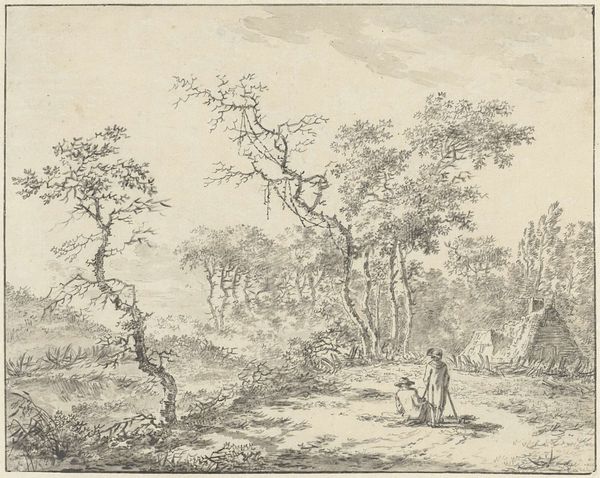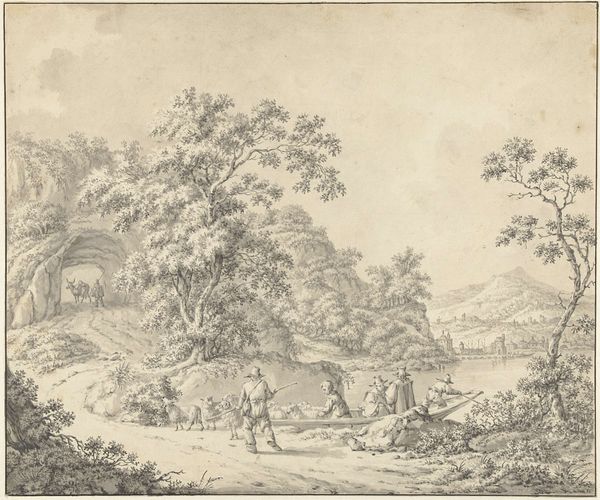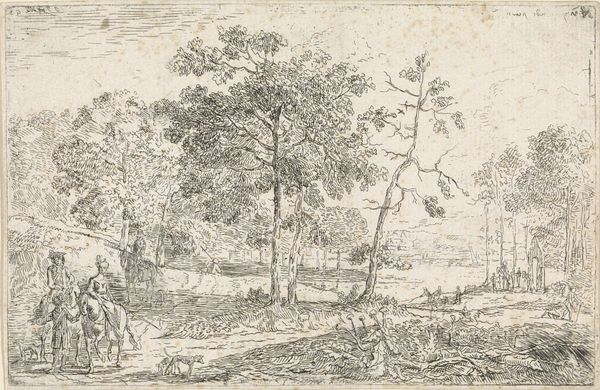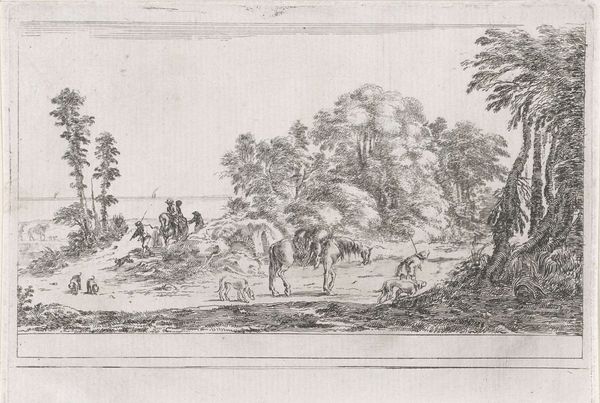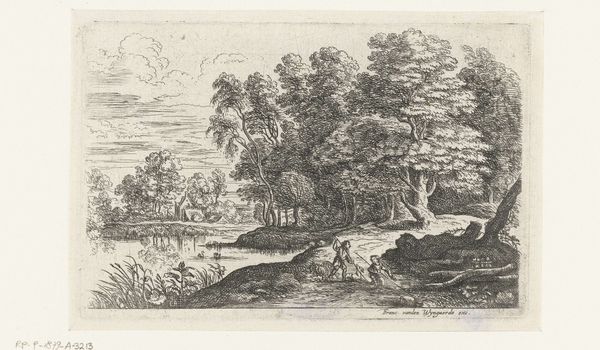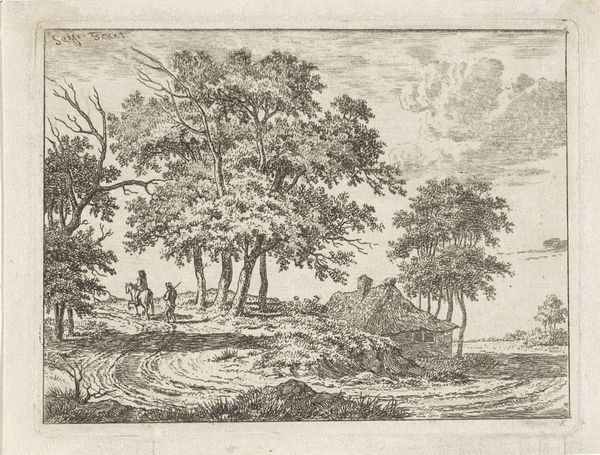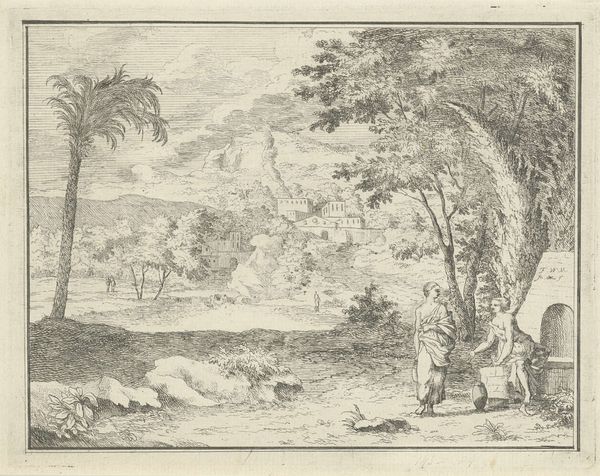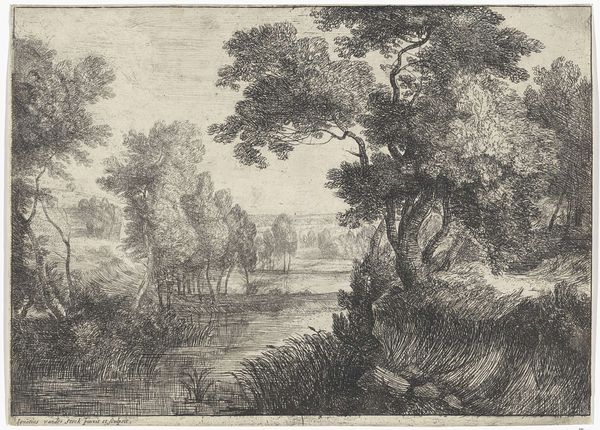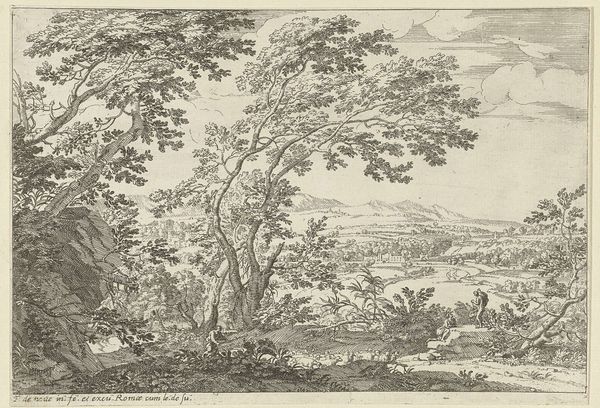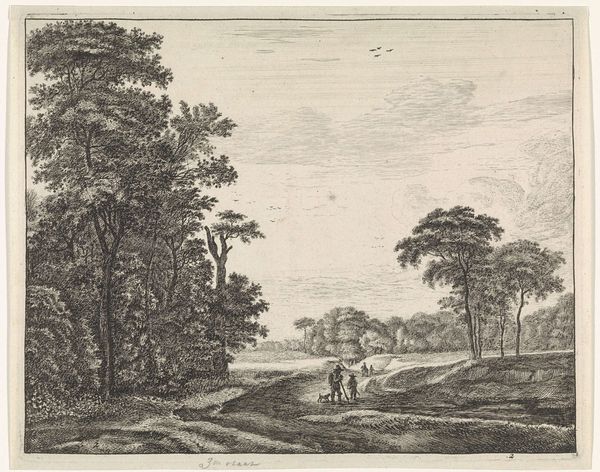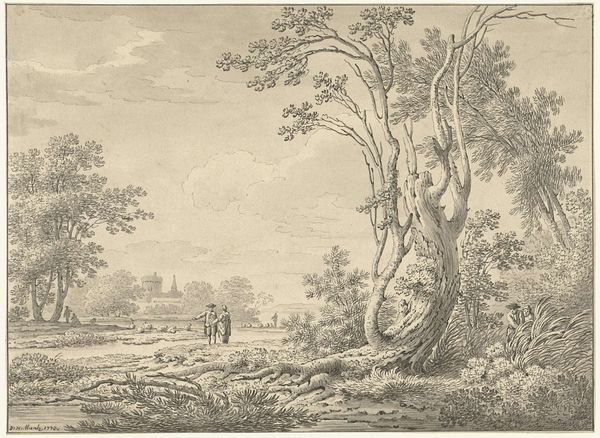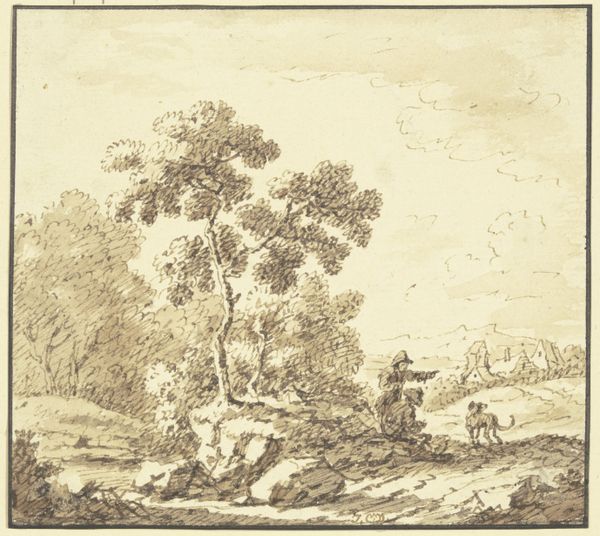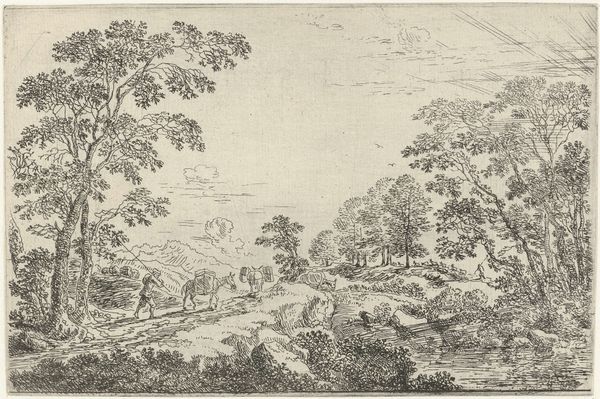
plein-air, watercolor
#
plein-air
#
landscape
#
watercolor
#
coloured pencil
#
15_18th-century
#
genre-painting
#
realism
Dimensions: height 115 mm, width 169 mm
Copyright: Rijks Museum: Open Domain
Curator: This is "Gezicht in Gelderland," which roughly translates to "View in Gelderland," dating from 1754 to 1810 by Pieter Remmers. It’s rendered in watercolor. Editor: My first thought is one of quiet observation. It feels almost voyeuristic, like we’re peeking in on a small moment in the lives of these figures. The subdued palette reinforces that sense of gentle intrusion. Curator: I agree. The execution points to a society where leisure and recording everyday life are valued. Notice how Remmers, a relatively unknown artist, is engaging with the genre tradition while simultaneously showing a unique level of observation regarding Gelderland’s environment and its inhabitants. This reflects evolving societal structures where ordinary life becomes subject and consumer good. Editor: It's fascinating to consider this in light of plein-air painting. The accessibility of watercolor facilitated on-site art production, marking a departure from academic artistic tradition, impacting not only how landscape was painted but by whom. It democratized art making to a certain degree. Curator: Exactly. And consider the use of colour. Although subtle, the washes give depth to the foliage, soil, and figures’ garments. He’s clearly familiar with the behaviour of his medium, using its properties to capture both texture and light, indicating skill acquired via practice and perhaps also instruction. Editor: Thinking about context, Gelderland wasn't merely scenery, but also an economic engine for the region. Do we know if Remmers engaged with patrons who held interest in showcasing specific economic activities prevalent in this region? Curator: It’s unclear who Remmers' patron might have been for this work, but he was documenting a society increasingly conscious of its image and resources. "Gezicht in Gelderland" reflects an appreciation for work processes intrinsic to rural settings but framed to engage the growing aesthetic taste of the time. Editor: What a powerful insight. Understanding how social practices impact modes of artmaking certainly helps unpack these scenes. Curator: It's been a pleasure examining this artwork with you. I hope our discussion has revealed just how multifaceted representations of ordinary life can be when viewed with historical awareness. Editor: Absolutely. Looking closely at how material realities translate into artworks invites us to examine assumptions concerning artistic expression and appreciate the interplay between objecthood, artist, and history.
Comments
No comments
Be the first to comment and join the conversation on the ultimate creative platform.
